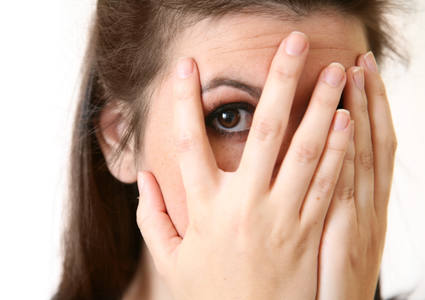




Women's Health
Urinary Incontinence: There Are Solutions


Uh oh.
A cough.
A sneeze.
A laugh that was just a little too hard.
More women than probably care to admit it have had the embarrassing problem: urine leaking at the worst possible time.
It can be inconvenient, embarrassing and uncomfortable, and it causes some people to stay home and avoid their everyday lives. What women need to know is that there are many options to help either manage or stop leakage so they can get out and enjoy life again. The important thing is to communicate with someone about it. There are things that can be done.
Types of urinary incontinence
 There are two main types of urinary incontinence:
There are two main types of urinary incontinence:
- Stress incontinence is when the leakage is associated with physical activity such as coughing, sneezing or lifting. Basically, there isn’t enough resistance at the bladder outlet so any time there’s enough pressure put on it from above, urine can leak out.
- Urge incontinence happens when the leakage is associated with a strong urge to get to the bathroom. The bladder begins to empty or drain when you don’t want it to.
It’s possible for patients to have a mix of both types of incontinence.
Stopping the leak
More and more women are turning to products from brands such as Always®, Depend® and Poise® to help catch and absorb leaking urine. Many of these products are becoming sleeker and less noticeable designed for women on the go.
"While these products can give women the confidence to be able to go out and enjoy their lives, they need to know that some treatments including physical therapy, medications, or surgery can resolve or significantly decrease the amount of leakage. Women can regain their self-assurance without pads, which are actually quite expensive over time."
Dr. Paige Berryman
Methodist Physicians Clinic OB/GYN, Urogynecologist
Treatments for incontinence
Treatments for all types of incontinence can be very different, but many times they start with methods that don’t require surgical intervention.
Non-surgical intervention
- Physical therapy – Exercises such as Kegels and going to the bathroom at specific times can help tame the urge to urinate too often as well as strengthen pelvic floor muscles and those surrounding your urinary tract. The better control you build, the more success you will have at stopping leaks.
Many women are hesitant about coming to pelvic floor physical therapy because they are embarrassed or think their symptoms are normal. These women need to know they aren’t alone. We’ve heard and worked with numerous women on many different issues, and we’ve probably heard stories like theirs before. - Control fluid intake – Drinking too many fluids, and too many of the wrong kinds of fluids, can increase your urge to go. If you have incontinence, the usually-recommended six to eight glasses of water a day is simply too much. Carbonated beverages, soda pop, sweeteners, coffee, caffeine and alcohol can also irritate your overactive bladder.
Make sure you’re not consuming more than 60 ounces of fluid a day. We also recommend that patients monitor their caffeine intake. Some people drink loads of coffee or several cans of soda a day, which can lead to increased urinary production and increased leakage. - Diet modification – Some foods can cause your bladder to go into overdrive. You may want to avoid highly acidic fare such as citrus fruits (and beverages), tomatoes and onions. Mexican foods, chili peppers, horseradish and spicy Chinese food may make overactive bladder symptoms worse. Some people also have problems with creamy, rich sour cream and cheese. Keep a journal of what you’re eating to find out what irritates your bladder the most.
- Weight loss – Being overweight can put increased pressure on your bladder. Some research has shown that losing 8 percent of body mass can improve symptoms of incontinence.
When nonsurgical methods don’t solve the problem, a urogynecologist can look at more aggressive treatment methods.
More-aggressive intervention options
- Botox injections – Yes, the same medication designed to reduce wrinkles on your face can also be used to help calm an overactive bladder. It helps paralyze the muscles that are squeezing down too hard and too often.
- Prescribed medications – Certain medications can work to relax the bladder muscle and may increase the amount of urine your bladder can hold.
- Sacral neuro modulation – It’s sort of like a pacemaker for your bladder. Performed as an outpatient procedure, two tiny electrodes are inserted along the sacral nerve to help stimulate the nerves and control the urge to go.
- Mid-urethral sling procedure – Urethral sling surgeries involve placing a mesh sling around the urethra to support it when abdominal pressure is applied and prevent the leakage of urine.
Controlling an overactive bladder is a deeply personal issue for every patient. But a trusted physician can help you form a plan for a long-term solution. The bottom line is that it’s all about preserving and protecting your quality of life. It’s a personal decision and one that can help you live life to the fullest without fear.


